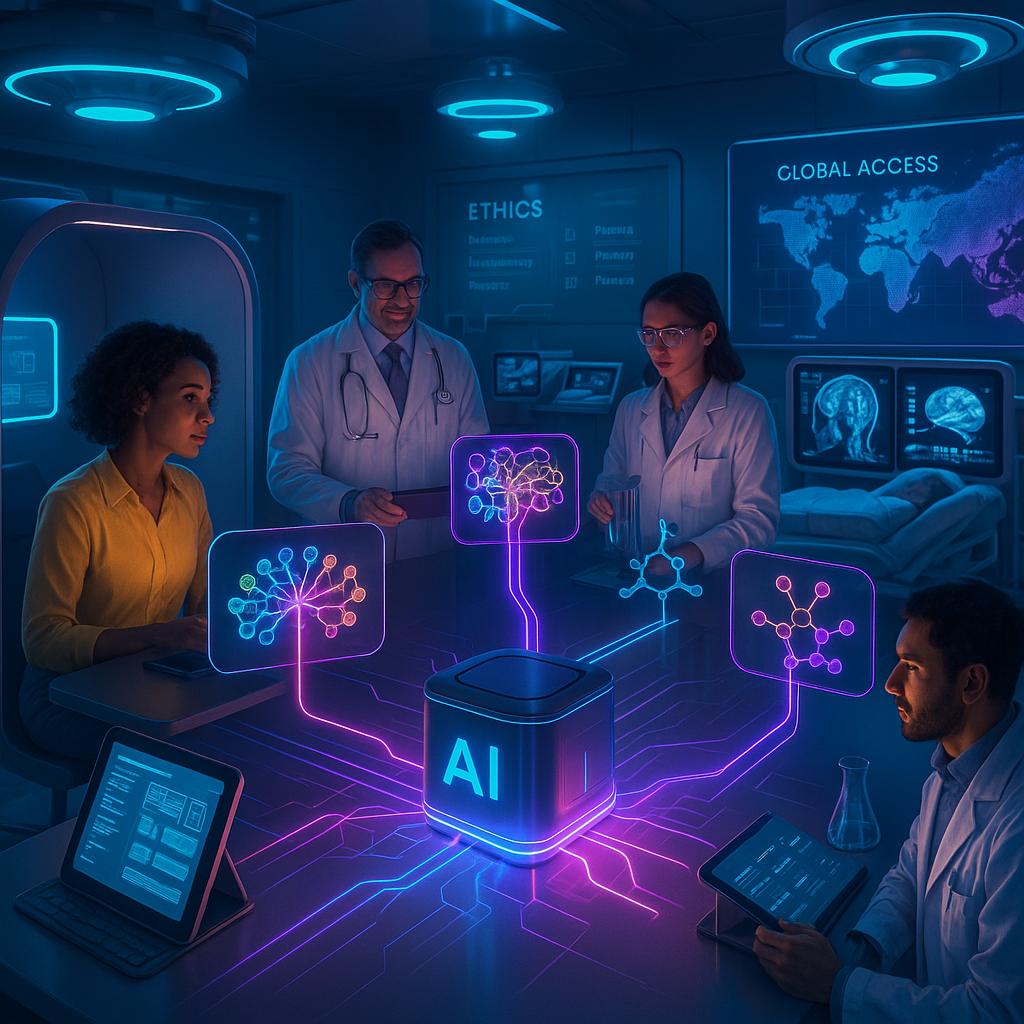Key Takeaways
- AI adoption across sectors is accelerating, with AI integration in education driving uptake in healthcare and scientific research as organizations reuse effective strategies.
- Knowledge transfer is fueling innovation through mechanisms like shared data standards and collaborative platforms, allowing educators, doctors, and scientists to learn from each other’s AI implementations.
- Ethical concerns are gaining urgency, as the report calls for more dialogue about bias, transparency, and unequal access to AI across sectors.
- Global disparities persist, with low-resource institutions and countries at risk of exclusion from the evolving AI-powered knowledge ecosystem.
- Looking ahead, Stanford indicates that the next AI Index will monitor the impact of new cross-domain alliances and potential policy interventions.
Introduction
Stanford’s 2025 AI Index Report, released today, presents artificial intelligence as a powerful force reshaping connections between education, science, and healthcare. By spotlighting rapid cross-sector adoption, urgent ethical debates, and widening global inequalities, the report signals that AI is fundamentally transforming the architecture of human knowledge and possibility.
Cross-Domain Integration Trends
The Stanford AI Index Report 2025 documents a surge in cross-domain AI adoption, as successful approaches in one sector increasingly drive applications in others. Data reveals a 78% year-over-year increase in AI systems built on learnings from multiple fields.
Educational AI frameworks have become key influencers, with their methods for handling diverse learning patterns and ethical issues now applied in healthcare and scientific research. The report records 215 instances where educational AI directly impacted healthcare solutions.
The success of this integration hinges on unified data standards and shared ethics guidelines. These foundations enable AI models developed for education to be adapted for healthcare diagnostics and scientific investigation.
Stay Sharp. Stay Ahead.
Join our Telegram Channel for exclusive content, real insights,
engage with us and other members and get access to
insider updates, early news and top insights.
 Join the Channel
Join the Channel
Educational Sector Leadership
Personalized Learning Breakthroughs
Educational institutions are leading with personalized learning strategies that now inform healthcare training and patient education. Natural language processing systems, first designed for classroom use, have evolved into tools for tailoring patient communications.
Algorithms tracking student progress have developed into systems analyzing learning patterns, now shaping everything from medical diagnostics to research methods. This demonstrates the adaptability of educational AI frameworks across fields.
AI tools designed for neurodivergent learners illustrate how targeted educational technologies are being adapted far beyond the classroom.
Ethical Framework Development
The education sector has created ethical guidelines that are being adopted far beyond the classroom. These frameworks address data privacy, algorithmic bias, and transparent decision-making.
Dr. Elena Martinez, lead researcher for the Stanford Index, noted that education’s early focus on AI ethics has offered a model for other sectors. The report finds these principles increasingly shape healthcare AI governance.
Prompt engineering best practices now also play a key role in reducing AI bias and enhancing transparency in both educational and healthcare AI models.
Healthcare Integration Patterns
Knowledge Transfer Mechanisms
Healthcare organizations have adapted educational AI tools for medical training and patient care. The report identifies 47 major institutions implementing modified educational AI for clinical decision support.
Diagnostic algorithms now build on learning patterns from education, providing more nuanced and flexible healthcare solutions. This cross-application has shortened development cycles for new healthcare AI applications by an average of 43%.
AI medical diagnostic technology has rapidly evolved by leveraging knowledge transfer mechanisms pioneered in education.
Implementation Challenges
Despite progress, healthcare faces unique challenges when adapting educational AI frameworks. Privacy demands and regulatory requirements increase implementation complexity.
The report describes ongoing initiatives to address these barriers, such as collaborative platforms and shared learning repositories. These efforts help institutions adopt successful practices while meeting sector-specific needs.
Global Access Disparities
Resource Distribution Analysis
Major differences in cross-domain AI access persist between high-resource and low-resource institutions worldwide. Only 12% of educational organizations in developing regions have advanced AI tools, versus 67% in developed economies.
Healthcare contexts face similar gaps, with resource limitations amplifying implementation obstacles. The report points to infrastructure development and knowledge sharing as essential to closing these divides.
AI personal knowledge management tools offer scalable approaches to knowledge sharing that could help bridge global disparities.
Collaborative Solutions
Cross-sector partnerships are emerging to address these disparities. University-hospital collaborations showcase how sharing resources and expertise can accelerate AI adoption in underresourced environments.
International initiatives are building networks to link institutions across economic lines, aiming to promote sustainable technology transfer and implementation support.
Stay Sharp. Stay Ahead.
Join our Telegram Channel for exclusive content, real insights,
engage with us and other members and get access to
insider updates, early news and top insights.
 Join the Channel
Join the Channel
Conclusion
Stanford’s 2025 AI Index marks a pivotal moment for cross-sector AI integration, with the education sector’s ethical and technical blueprints actively shaping advances in healthcare and scientific research. While shared progress offers real promise, global inequity and persistent implementation hurdles reflect the ongoing complexity of meaningful integration. What to watch: upcoming developments from cross-sector collaborations and new initiatives on data standards designed to improve access and cooperation.
AI origin philosophy continues to shape the discussion as these sectors navigate the evolving boundaries between technology, knowledge, and society.





Leave a Reply